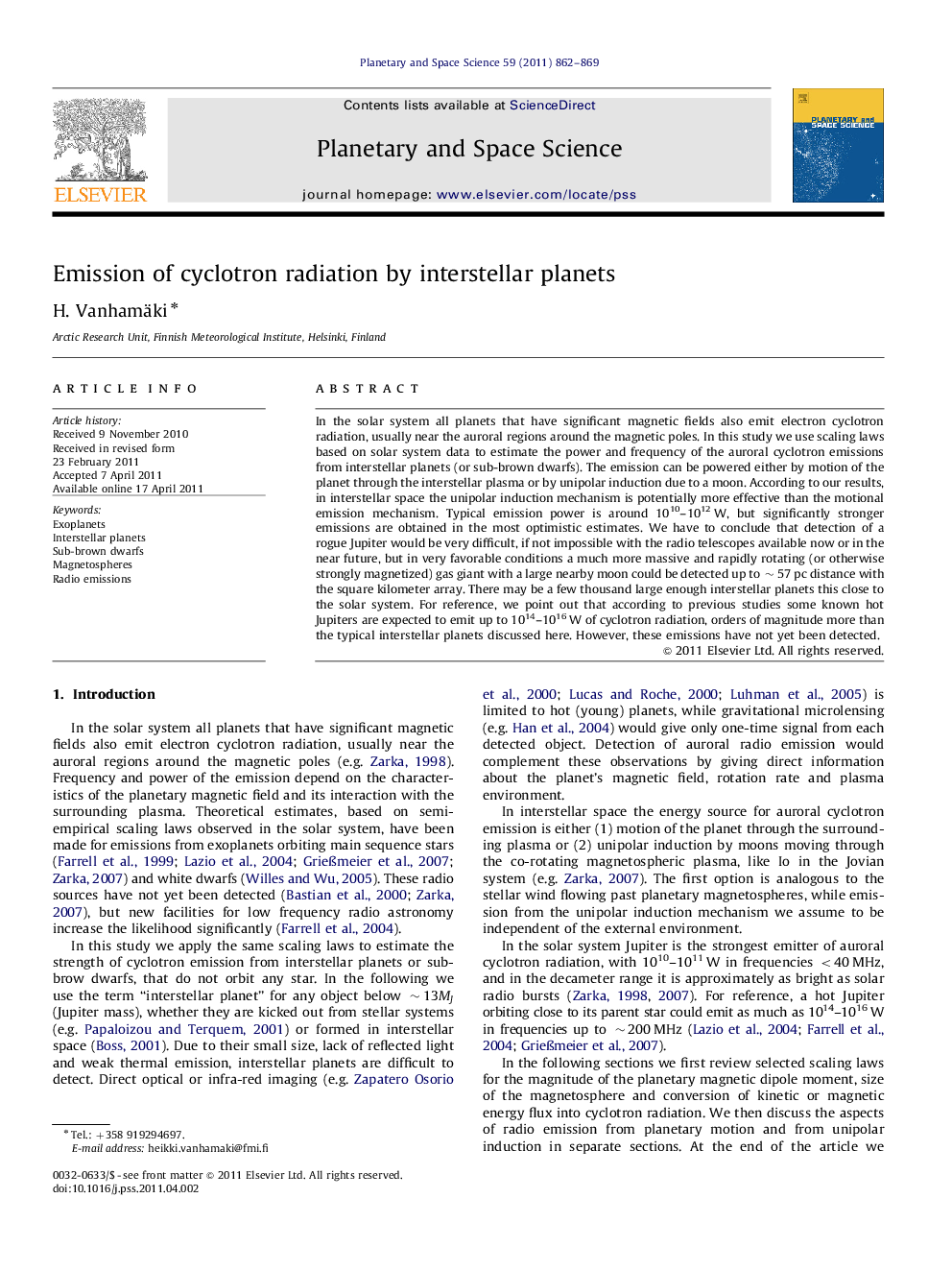| کد مقاله | کد نشریه | سال انتشار | مقاله انگلیسی | نسخه تمام متن |
|---|---|---|---|---|
| 1781676 | 1022295 | 2011 | 8 صفحه PDF | دانلود رایگان |

In the solar system all planets that have significant magnetic fields also emit electron cyclotron radiation, usually near the auroral regions around the magnetic poles. In this study we use scaling laws based on solar system data to estimate the power and frequency of the auroral cyclotron emissions from interstellar planets (or sub-brown dwarfs). The emission can be powered either by motion of the planet through the interstellar plasma or by unipolar induction due to a moon. According to our results, in interstellar space the unipolar induction mechanism is potentially more effective than the motional emission mechanism. Typical emission power is around 1010–1012 W, but significantly stronger emissions are obtained in the most optimistic estimates. We have to conclude that detection of a rogue Jupiter would be very difficult, if not impossible with the radio telescopes available now or in the near future, but in very favorable conditions a much more massive and rapidly rotating (or otherwise strongly magnetized) gas giant with a large nearby moon could be detected up to ∼57∼57 pc distance with the square kilometer array. There may be a few thousand large enough interstellar planets this close to the solar system. For reference, we point out that according to previous studies some known hot Jupiters are expected to emit up to 1014–1016 W of cyclotron radiation, orders of magnitude more than the typical interstellar planets discussed here. However, these emissions have not yet been detected.
► We estimate power and frequency of cyclotron emission from interstellar planets.
► Energy source is either motion of the planet or unipolar induction by a moon.
► Typically maximum detection distance with square kilometer array is ∼3∼3 pc.
► In the best case detection limit may be ∼57pc, with ∼2800∼2800 objects in the range.
Journal: Planetary and Space Science - Volume 59, Issue 9, July 2011, Pages 862–869